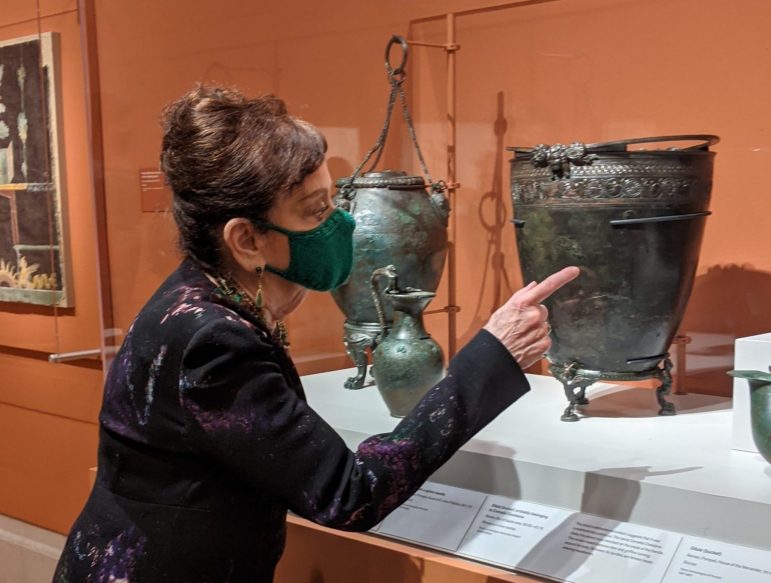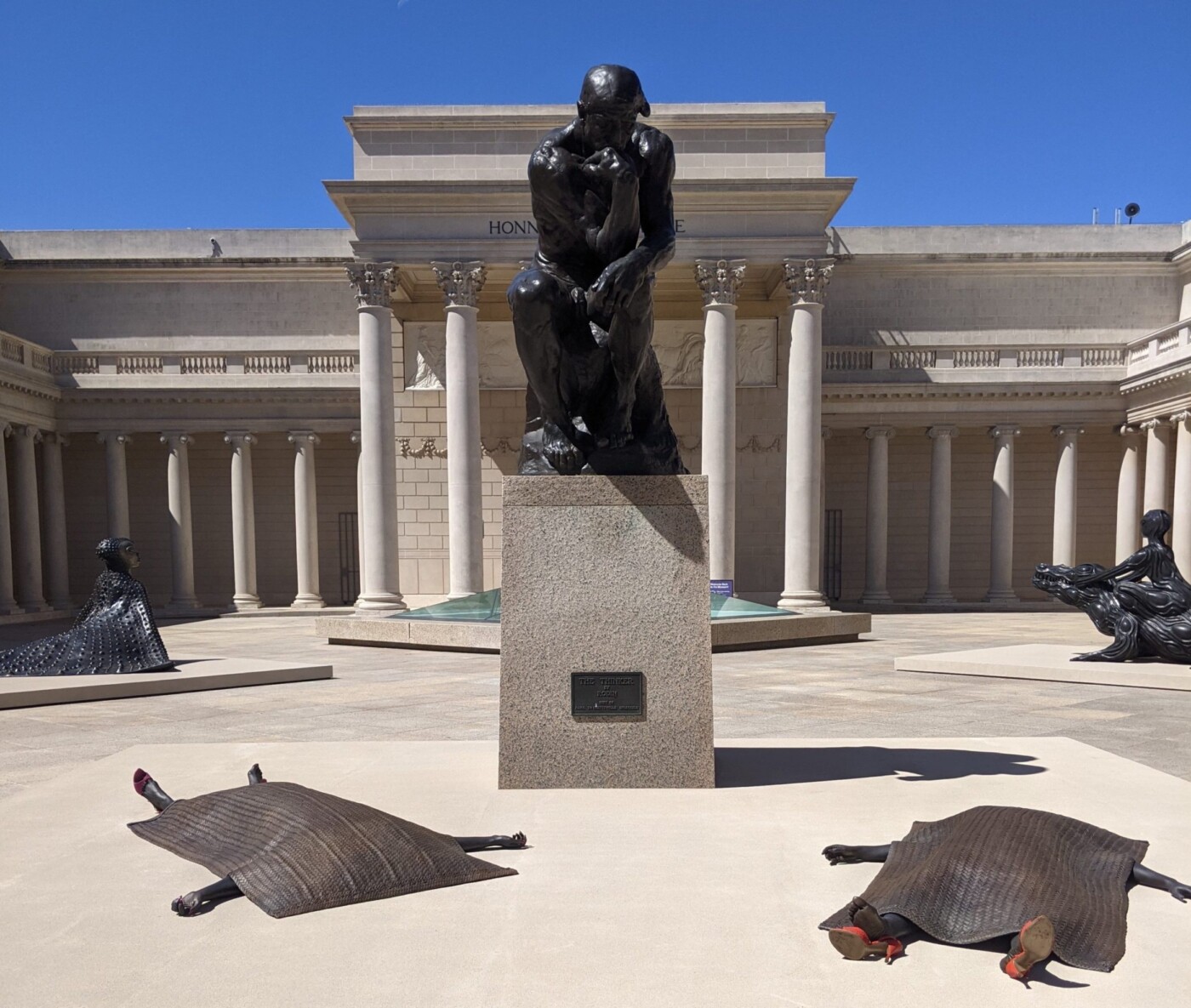The Legion of Honor reopened to the public May 7 with two new exhibitions — “Last Supper in Pompeii: From the Table to the Grave” and “Wangechi Mutu: I Am Speaking, Are You Listening?”
“Last Supper in Pompeii” was originally set to premiere April 2020; however, it was postponed with the museum’s closure because of the pandemic. The exhibition tells a visual tale of daily life in Pompeii, a Roman city in the Bay of Naples that was destroyed by the rains of fire and ash from the eruption of Mount Vesuvius in 79 A.D.

Pompeii is likened to Napa Valley, as it was where the elites went to dine and drink in celebration of the god of wine and fertility, Bacchus.
“We knew the idea of food and wine would be very popular in California,” says Renée Dreyfus, distinguished curator and curator in charge of ancient art at the Fine Arts Museums of San Francisco. “So how could we miss?”
At the exhibition entrance stands a naked Bacchus with a panther to welcome fellow “bacchanals,” or worshippers of Bacchus. “Last Supper in Pompeii” contains works that had never traveled to the U.S. before, including a colorful landscape fresco that was featured in one of the citizens’ homes, kitchen tools Pompeiians used and some carbonized food excavated from the site.

In visual opposition to the Pompeii exhibition is Kenyan American artist Wangechi Mutu’s exhibition “I Am Speaking, Are You Listening?” Mutu’s sculptures are dispersed throughout the museum, set against colonial imagery for stunning impact.
Mutu’s statues with Black feminist imagery are positioned in response to the Legion’s European works of art as a challenge to racism and sexism.

“This important new installation in the Fine Arts Museums’ contemporary art program reminds us of the potential of art to challenge outdated narratives and uncover underlying truths,” states Thomas P. Campbell, director and CEO of the Fine Arts Museums of San Francisco.
Guests to the museum are greeted at the Legion’s courtyard entrance by two of Mutu’s “Shavasana” sculptures of women in corpse pose under bronze sheets in the eyeline of Auguste Rodin’s “The Thinker.” With their heels and painted nails, they represent violence against women.
On “The Thinker’s” flanks are two of Mutu’s textured, bronze works “MamaRay” and “Crocodylus,” half-human, half-alien goddesses that appear strong and audacious in juxtaposition to the two slain “Shavasana” figures. Mutu’s four works surrounding “The Thinker” are nods to Rodin’s commissioned piece “The Gates of Hell.”
General admission tickets to the Legion of Honor are $12-$15 for adults, and tickets to “Last Supper in Pompeii” are $27-$30 for adults, $15 for children ages 6-17. Free Saturdays at the museum have resumed, open to for all Bay Area residents with advance reservations. Under COVID-19 restrictions, visitor capacity has been reduced to less than 25%.
